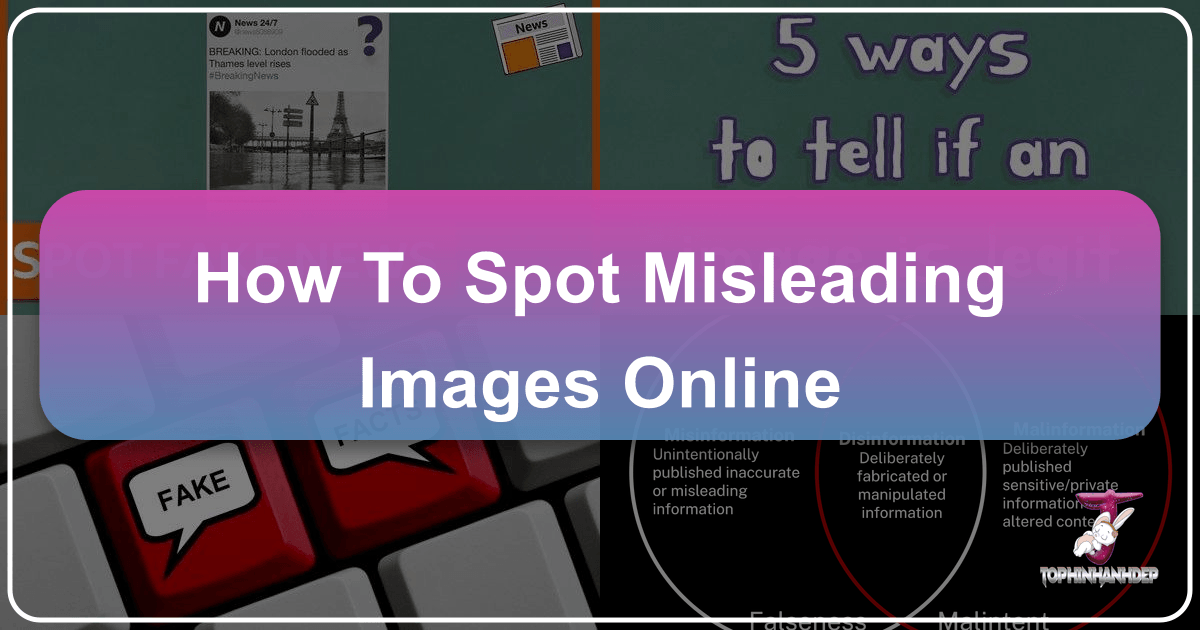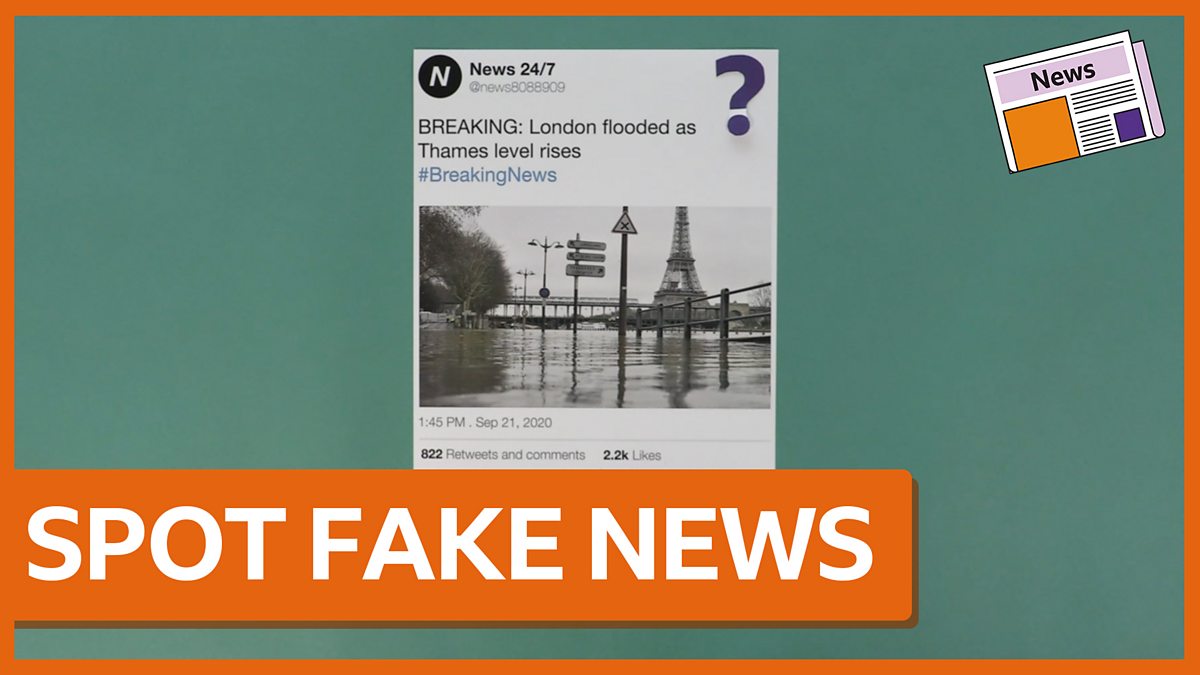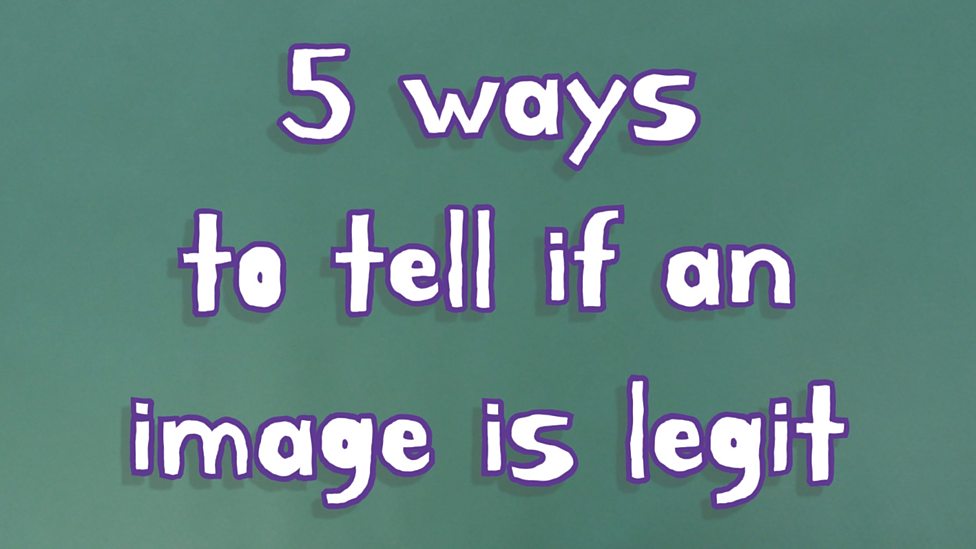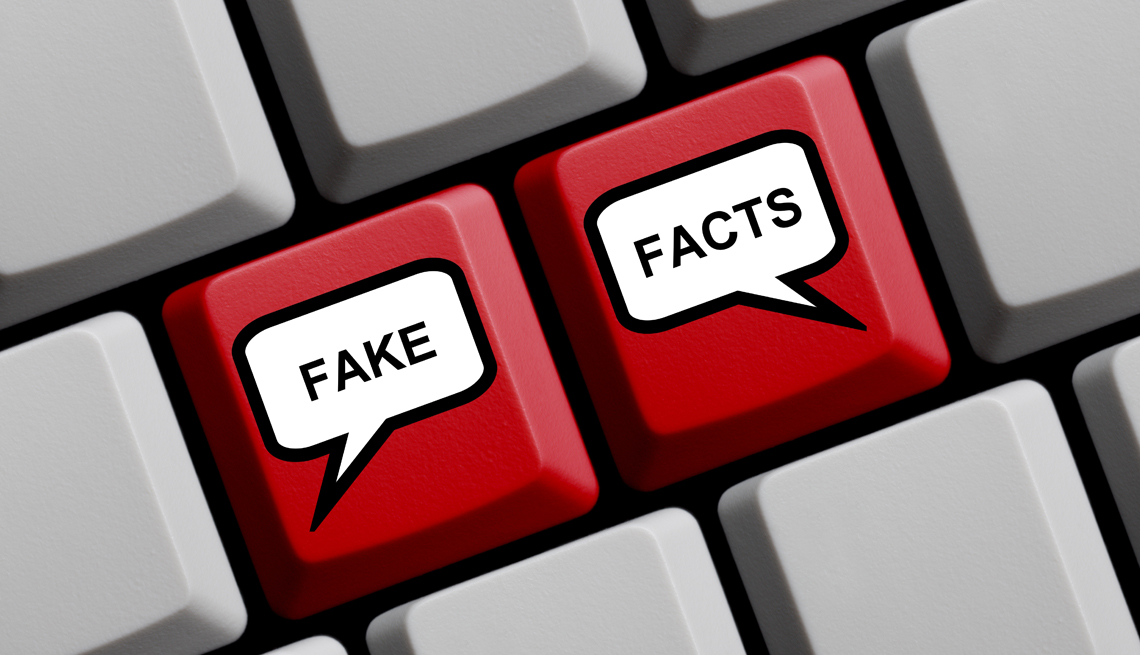How to Spot Misleading Images Online: A Guide for the Visually Astute

In our increasingly visual world, images serve as powerful storytellers, capturing moments, conveying emotions, and even acting as crucial evidence of events. From the breathtaking nature wallpapers and abstract backgrounds found on Tophinhanhdep.com, designed to inspire and delight, to vital photographic documentation, visuals shape our understanding of reality. High-resolution photography and thoughtfully curated collections allow us to appreciate the beauty and complexity of the world through a lens. However, this same power makes images potent tools for deception. In the vast, often chaotic, landscape of the internet, the question “Is seeing always believing?” has never been more relevant.

The digital age, while offering unparalleled access to stunning visuals and creative possibilities through platforms like Tophinhanhdep.com, has also ushered in an era where images can be easily manipulated, taken out of context, or even entirely fabricated. Advanced digital photography techniques, coupled with sophisticated editing styles and AI-driven tools, mean that what appears authentic might be far from it. Understanding how to critically evaluate the images we encounter online is no longer just a good skill—it’s an essential form of digital literacy. This guide, drawing on insights from various experts and aligning with Tophinhanhdep.com’s commitment to visual clarity and authenticity, will equip you with the knowledge to navigate the online visual landscape with a discerning eye, protecting you from misinformation and helping you appreciate genuine photographic artistry.
The Shifting Sands of Online Visuals: Why Vigilance Matters
The internet, a boundless repository of images, from aesthetic wallpapers to stock photos, has become a primary source of information for many. While platforms like Tophinhanhdep.com strive to provide high-quality, verified visual content, the broader online ecosystem is rife with content that blurs the lines between fact and fiction. The ease with which images can be shared and altered demands a proactive approach to visual literacy.

The Digital Deluge and Erosion of Trust
The rapid spread of information online means that misleading content can go viral in minutes, often wrapped in the guise of memes, short videos, or screenshots. Social media platforms, where billions connect and share daily, have become significant conduits for both truth and falsehoods. Recent shifts in how these platforms approach content moderation and fact-checking mean that individuals must increasingly rely on their own critical thinking skills to distinguish genuine content from manipulated narratives. Studies indicate that a significant portion of online users encounter misleading information daily, highlighting the scale of the challenge.
For those who appreciate high-resolution photography and digital art, as offered on Tophinhanhdep.com, it’s crucial to recognize that the very tools and techniques that enable creative photo manipulation or artistic visual design can also be misused. Our image tools, such as converters, compressors, optimizers, and AI upscalers, are designed to enhance and refine legitimate visuals, ensuring clarity and quality. However, malicious actors employ similar, often more advanced, software to create incredibly convincing fakes. This underscores the need for constant vigilance, even when engaging with seemingly benign visual content. The goal is not to foster cynicism, but rather to cultivate a healthy skepticism that empowers you to demand veracity from the images you consume.

Understanding Manipulation Tactics
Information manipulation poses a serious threat to informed discourse and communal understanding. Disinformation actors employ a variety of techniques to deceive and influence people online. These can range from deceptively simple methods, like cropping an image to alter its context, to sophisticated ones, such as creating “deepfakes”—cleverly manipulated audio or videos designed to show a person doing or saying something they never did. These tactics often exploit human emotions—anger, fear, sadness—to bypass rational judgment and encourage unverified sharing.
Even seemingly harmless aesthetic images or beautiful photography can be co-opted or misrepresented in misleading contexts. A stunning nature photograph might be falsely attributed to a different location to bolster a deceptive story, or an emotional image might be used to evoke sympathy for a fabricated cause. Recognizing these tactics, therefore, starts with understanding the motivations behind them and the common methods employed. By developing your critical thinking skills, you can protect yourself from becoming a pawn in the spread of information manipulation, ensuring that your appreciation for genuine visual content remains uncompromised.
Decoding the Visual Narrative: Key Areas to Scrutinize
When you encounter an image online, particularly one that evokes a strong emotional response or makes a significant claim, it’s essential to pause and engage in a process of critical evaluation. Just as a photographer meticulously plans their shot, a discerning viewer must analyze the various elements that make up an image’s story.
Context and Credibility: Beyond the Pixels
The authenticity of an image often lies not just in its visual integrity, but in the surrounding information and its broader context.
- Location: Is the image truly from where it claims to be? Misrepresenting the geographical origin of an image is a common deceptive tactic. Look for subtle cues in the background: street signs in an unexpected language, unique architectural styles, vegetation not indigenous to the claimed location, or obvious landmarks that contradict the narrative. For instance, a “nature wallpaper” purportedly from the Amazon might show flora distinct to another continent. Tophinhanhdep.com prides itself on accurately tagging and categorizing its vast collection of images, making transparent their origins.
- Perspective: The way an image is framed can dramatically alter its perceived meaning. A close-up shot might make an object appear much larger or an event more dramatic than it actually is. Cropping can intentionally omit crucial details, presenting only one side of a story. To get a full picture, always seek out other images or videos from the same event or location. Comparing diverse perspectives, similar to exploring various thematic collections or trending styles on Tophinhanhdep.com, can help reveal a more complete and accurate narrative.
- Date: An old image, repurposed and presented as current, is a pervasive form of misinformation. A powerful photograph from a past conflict or natural disaster can be re-shared to suggest a contemporary event. Always check the publication date of the content, and if it’s a standalone image, investigate its original publication date. The freshness of content is often a hallmark of quality reporting, similar to how Tophinhanhdep.com regularly updates its “Image Inspiration & Collections” with new and relevant visuals.
- Source & Author: Critical evaluation begins with scrutinizing the source. Click away from the image to investigate the website or social media account that posted it. Does the publisher have a clear mission statement? Is their contact information readily available? Do they have a posted editorial or journalistic standards policy, and do they clearly label corrections or content changes? Check the author’s credentials and search for information about them. Reputable sources, much like the credited photographers and designers whose work is showcased on Tophinhanhdep.com, are transparent about their origins and expertise. Contrast this with “fake news” authors who are difficult to identify, lack relevant experience, or conceal biases.
- Supporting Sources: Many online articles or posts include links to “supporting” evidence. Click on these links. Do they actually lead to credible information, or do they redirect to other dubious sources, or even unrelated content? Does the information provided genuinely back up the claims made in the image’s caption or accompanying text? A legitimate source will provide verifiable support.
- Fake Quotes: An image, especially a portrait or a dramatic scene, might be accompanied by a fabricated quote. Ask yourself if the person in the image would credibly say such a thing. Search the quote separately to verify its authenticity. Disinformation actors frequently attribute impactful but false statements to prominent figures or emotionally resonant images to heighten their persuasive power.
- Check Your Biases: This is perhaps the hardest step, but vital. Our personal beliefs, political leanings, and emotional responses can significantly affect our judgment. Content that confirms our existing views is often accepted without scrutiny. Take a moment to consider if your own biases are making you more or less likely to believe a particular image or its accompanying narrative.
The Art of Digital Deception: Spotting Image Alterations
Beyond contextual clues, the image itself often holds signs of manipulation. Understanding common editing techniques can turn you into a visual detective.
- Photoshopping and Image Editing: While Tophinhanhdep.com celebrates creative visual design and photo manipulation as art forms, these techniques can be used maliciously. Look for tell-tale signs of amateur or rushed editing:
- Missing or Inconsistent Shadows: Objects that appear to float or have shadows that don’t match the light source in the rest of the image.
- Unnatural Edges or Cropping: Jagged, blurry, or unnaturally sharp edges where elements have been cut and pasted. Pixelation in specific areas where an image has been stretched or enlarged poorly.
- Inconsistent Lighting: Different parts of an image may have different light directions or intensities.
- Repeated Patterns: Identical clouds, trees, or crowd members that suggest cloning.
- Distorted Backgrounds: Straight lines becoming curved, or objects appearing stretched or compressed, particularly common in subtle manipulations. While Tophinhanhdep.com offers image optimizers and other tools for enhancing genuine photos, malicious editing goes beyond tasteful adjustments, aiming to deceive rather than beautify.
- Deepfakes (Visuals): With advancements in AI, deepfakes are becoming increasingly sophisticated. These are images or videos generated or altered by artificial intelligence, often swapping faces or generating entirely new scenes that appear hyper-realistic. Even with high-resolution stock photos or digital photography, deepfakes can fool the untrained eye.
- Subtle Red Flags: Look for unnatural body movements or a subject that is unusually static. Blurry video, strange scene cuts, or inconsistent skin textures (too smooth or too wrinkled compared to the age of the eyes or hair) can be indicators. While AI upscalers offered on Tophinhanhdep.com can improve image quality, AI advancements also contribute to the creation of highly convincing fakes. It’s a double-edged sword: the same technology that can enhance a beautiful photograph can also create a digital fabrication.
- Anomalies in Features: Groh’s Detect Fakes website (and similar resources) demonstrates how subtle inconsistencies, like unattached earlobes on a person who normally has attached ones, can be a clue. The key is to look for anything that feels “off” or inconsistent within the image itself.
- Be Wary of Screenshots: Screenshots, especially of social media posts or news articles, can be easily doctored. A screenshot without a link to the original content should be a major red flag. Always seek out the live, original version of a story or post to ensure it hasn’t been altered.
Empowering Your Visual Literacy: Tools and Techniques for Verification
Equipped with an understanding of manipulation tactics, the next step is to actively employ verification tools and cultivate a critical mindset. Becoming a savvy consumer of online images means adopting habits that prioritize accuracy and truth.
Leveraging Digital Forensics
Fortunately, several powerful tools are available to help you investigate the provenance and authenticity of images.
- Reverse Image Search: This is one of the most effective tools for verifying images. Services like Google Images, TinEye, Yandex Images, and RevEye allow you to upload an image or paste its URL to see where else it has appeared online.
- How it helps: A reverse image search can reveal the image’s original publication date, its earliest known appearance, and any previous contexts in which it was used. You might discover that an image presented as recent breaking news is, in fact, an old photograph recycled from an unrelated event. You can also see if reputable news outlets or dedicated fact-checking sites have previously analyzed the image. Tophinhanhdep.com’s own image tools, while focused on enhancement and conversion, can assist by ensuring your image is in the correct format and optimized for upload to these external reverse search services, making your verification process smoother.
- Using on Mobile: On Android devices, open the Google or Chrome app, press and hold on an image, and tap “Search image with Google Lens.”
- Lateral Reading: When encountering an unfamiliar source, whether a lesser-known news organization or a niche website, don’t rely solely on what that site says about itself. Practice “lateral reading” by opening new tabs and searching for information about that source from other, more established and credible outlets. What do independent media watchdogs, academic institutions, or other reputable organizations say about its trustworthiness, funding, and potential biases?
- Google Search Tools: Beyond reverse image search, Google provides features that aid in verification:
- Featured Snippets: These descriptive highlights often appear at the top of search results, providing quick context about your query and its source.
- About This Result: By clicking on the three vertical dots next to a search result (or swiping up in the Google app), you can access Google’s “About the source” tool. This provides context about the website, helping you understand its reputation and editorial leanings. Google’s AI models are also improving to detect and refuse to answer queries based on false premises (e.g., “When did Snoopy assassinate Abraham Lincoln”), guiding users towards accurate information.
Cultivating a Critical Mindset
Beyond specific tools, developing a discerning attitude is key to navigating the visual web.
- Practice Patience: In the age of instant updates, news often travels faster than verified facts. Especially during breaking events, conflicting information and unverified images flood social media. Google, for instance, sometimes displays content advisories indicating that information for a query is rapidly evolving, suggesting it might be better to check back later when more confident search results are available. This doesn’t mean no helpful information exists, but rather that the full picture hasn’t yet emerged. Allowing the news to develop before forming an opinion or sharing content is a crucial safeguard against spreading misinformation.
- Engage Critically: Research consistently shows that simply pausing to ask yourself, “Is this credible?” significantly improves your ability to detect misinformation. This act of conscious attention prompts you to examine the source, its motivations, and the evidence presented.
- Manage Emotions: Misinformation is often crafted to trigger strong emotional responses—outrage, fear, sadness. If an image or its caption makes you feel intensely emotional, pause. Don’t respond or share immediately. Emotions can bypass rational thought, leading you to amplify unverified content. A deep breath and a moment of reflection can prevent you from inadvertently becoming a vector for disinformation.
- Likes ≠ Truth: On social media, a post with thousands of likes or shares might seem credible due to its popularity. However, virality does not equate to veracity. Many misleading images gain traction precisely because they tap into existing sentiments. Instead of focusing on engagement metrics, delve into the comments section. Often, other users may have already debunked the post, questioned its information, or provided fact-checked corrections.
- Ask the Experts: When in doubt, consult dedicated fact-checking services or digital literacy experts. While Tophinhanhdep.com focuses on providing genuine visual content, we strongly endorse the practice of seeking out verified information from reputable third-party fact-checkers.
- The Three Simple Questions: A powerful, easy-to-remember framework for evaluating any piece of information, including images, comes from educational experts:
- Who is behind the information? (Check the source, author, and their credibility/biases.)
- What’s the evidence? (Look for supporting sources, consistency, and signs of manipulation within the image itself.)
- What are other sources saying? (Cross-reference with multiple reputable outlets to get a balanced view.) By consistently applying these questions, you dramatically reduce your susceptibility to deception.
Tophinhanhdep.com: A Resource for Authentic Visuals and Informed Choices
At Tophinhanhdep.com, our mission is to provide a rich, diverse, and authentic collection of images—from stunning wallpapers and evocative backgrounds to high-resolution photography and creative digital art. We understand the power of visuals to inspire, communicate, and transform, and we are committed to fostering an environment where genuine artistic expression and factual representation are paramount.
Our carefully curated categories, such as Nature, Abstract, Aesthetic, and Beautiful Photography, are built on the principles of quality and integrity. When you browse our collections, you can trust that the images are presented honestly, with appropriate attribution and context. We offer a refreshing alternative to the often-unverified content found across broader social media feeds, providing a space where you can appreciate visual artistry without the constant need for suspicion.
Furthermore, our suite of Image Tools—including Converters, Compressors, Optimizers, AI Upscalers, and Image-to-Text functionalities—are designed to enhance and empower your interaction with authentic images. These tools are built to help you manage, refine, and understand genuine visuals, ensuring quality and accessibility. While we acknowledge that AI and digital manipulation techniques can be used for deceptive purposes, our focus is on harnessing these advancements for creative expression and legitimate enhancement, promoting ethical use within the visual design and digital art communities.
We celebrate creative ideas and photo manipulation as legitimate forms of artistic expression, showcased in our Visual Design and Image Inspiration & Collections. However, we advocate strongly for transparency and ethical practice in all forms of image creation and sharing. By fostering a community that values both creativity and truth, Tophinhanhdep.com aims to be more than just a source of beautiful images; it is a platform that encourages a discerning eye and a deeper appreciation for true photographic artistry in an increasingly complex digital world. We believe that by understanding how to spot misleading images, you not only protect yourself but also elevate the standard for visual communication online.
In conclusion, navigating the vast sea of online images requires a conscious effort to develop and employ visual literacy skills. The ease of sharing and sophisticated editing tools mean that we can no longer afford to take every image at face value. By understanding the common tactics of manipulation, leveraging available verification tools, and cultivating a critical, patient mindset, you empower yourself to discern truth from falsehood. This vigilance is not merely about avoiding misinformation; it is about preserving the integrity of visual communication, protecting our collective understanding, and ensuring that the powerful medium of photography continues to inspire and inform rather than deceive. Become a savvy online citizen, and let your appreciation for genuine visual content, like that found on Tophinhanhdep.com, be guided by an informed and discerning eye.